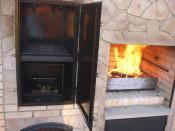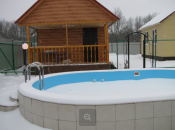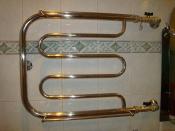Search
Login
Recommended
Brickwork, do-it-yourself brickwork, types of brickwork
People have used bricks for building houses since ancient times. In fact, even with the current level of development of the building materials industry, it is difficult to find a product equal in quality.
Content
- Brick in modern construction, its advantages
- We do the laying of walls with our own hands video
- Types of brickwork video
- Preparatory work
- Masonry corners video
- How is masonry walls done
- The ligament is the key to strength
Brick in modern construction, its advantages
Brick is an environmentally friendly, durable material that can breathe. It has durability, endurance to temperature changes, long service life. It reliably protects the room from freezing in cold weather and from excessive heating in the summer. Brick houses are attractive to look at. The latest developments in the field of brick production can successfully cope with those minor flaws that are characteristic of this building material.
Today it remains one of the most practical and sought-after building materials from which walls are erected.
We do the laying of walls with our own hands

Of course, the construction of a brick house, in particular the construction of walls, is most often entrusted to experienced builders - because the appearance, quality of the walls and their ability to save heat depend on whether the brickwork is done correctly.
But if you make an unambiguous decision to do construction work with your own hands - do not really worry - with diligent work and a desire to learn how to make brickwork with your own hands, it is quite possible. After all, every professional builder at one time was also a diligent student.
Types of brickwork

The use of different technologies, dressing systems and masonry features suggest its division into the following types:
- Lightweight - in most cases it is used in one-story construction. It involves the construction of two parallel walls with the placement of heat-insulating materials inside: plate insulation, backfill, lightweight concrete. To ensure the connection of the walls, the installation of diaphragms is carried out - reinforced or brick, bonded rows can be provided, which enter half the brick into the insulation layer.
- Continuous - implying the creation of a monolithic massif, the bricks are laid along the outer edge of the wall with spiky or spoon rows, i.e. short or long side. Fillings between them are called zabutki, they are laid out in halves or pokes.
- Decorative - usually an alternation of a row of string and three spoonfuls. In decorative masonry, a combination of clay bricks with silicate or glazed can be used.
- Reinforced - when it is performed, an increase in the bearing capacity of the walls is obtained by arranging fragments of reinforcement in the longitudinal and transverse seams.
- With facing - its implementation must necessarily be accompanied by dressing with the main wall.
For masonry, if its subsequent cladding is not provided, very high requirements are imposed:
- its surface should be perfectly flat,
- stacked rows must be in the same plane.

This is what a perfectly made brickwork looks like in the photo.
Preparatory work
Before masonry, the foundation surface must be cleaned with particular care. Performance of work involves ensuring good adhesion of the masonry to the base.

For the preparation of the solution are used: lime, cement, clay, gypsum, to improve its qualities pigments, plasticizers, hydraulic active substances can be added to the composition.
Masonry corners

It is she who is the most difficult part of the work. Correctly laid out corners (with strict observance of the vertical) will greatly simplify further work. In addition, it should be borne in mind that corners carry increased loads, it is impossible to use defective and hollow bricks when laying them!
When building a house, you must very strictly monitor compliance with the pattern of knitting angles, while always using a plumb line and level.
The construction of a house always begins with the forcing of corners; the masonry of the entire adjacent wall is equal to them.
How is masonry walls done
When doing construction work with your own hands, you should follow the recommendations and observe the technology of brickwork, only in this case it will look attractive, and the erected house will have the correct geometry.

You can start work from the location of the doors or from the corner, always from left to right. Before laying, the bricks are moistened, the solution is applied to the brick at a distance of 2 cm from its front side.
The calculation of the brickwork of the walls is made taking into account the requirements for their stability, strength and insulating qualities. The thickness of the supporting wall must withstand the load from reinforced concrete floors. The wall of 1 full-bodied brick has a thickness of 25 cm, the masonry of vertical hollow bricks is 30 cm, respectively, the external walls made of such bricks will have a thickness of 37.5 and 45 cm.
Quarter brick walls are used only if the height of the room does not exceed 3.5 m and the wall length is 5 m. These can be dividing walls in the room, a solid brick is used for their construction.
Ligament - the main point ensuring the strength of the masonry
Adequate strength of the structure being constructed is given by a correctly executed dressing system, which consists in laying bricks in a certain order, as well as using parts of the brick. Among the dressing methods, longitudinal, vertical and transverse sutures are distinguished.

Properly laid walls have excellent thermal inertia, they slowly warm up and cool down. When lining a brick wall, ligation is performed with the main wall through 5 rows, crosswise.
When masonry is performed, vertical and horizontal seams are distinguished, a prerequisite for high-quality masonry is ligation of each vertical seam with a brick of the next row.





